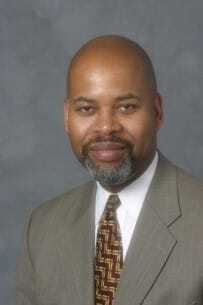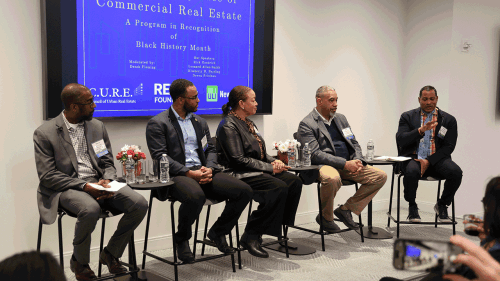This article is reprinted with permission from Real Estate Forum.
Since leaving the Wharton School in 1987, as one of some 35 African American students of that graduating class of MBAs, I have witnessed proliferating interest by American corporations in the subject of diversity management. (Just google the name of almost any Fortune 100 company and add the word “diversity” to confirm this.) That same year coincided with the release of the Hudson Institute’s report titled Workforce 2000, which detailed the rising demographic prominence of minority communities in the labor force.
However, one sector that has lagged behind other economic sectors in embracing diversity is the commercial real estate (CRE) industry, the sector that builds and owns the office buildings, industrial parks, and shopping centers that house the operations of American businesses. So what is salient before we reach the year 2020 is a candid discussion of the tangible benefits—to any industry—of embracing diversity.
I now serve on the board of directors of a major CRE diversity initiative. And during my tenure as a diversity advocate, I have observed that how companies, in any industry, have seen or understood the concept historically falls into one or more of several categories. Three are useful to highlight here:
- The demographic time bomb imperative. This acknowledges data projecting that the United States will have a majority-minority population by the year 2050—thereby likely becoming the most influential multicultural republic on the planet. The perceived dividends of adapting to this shift include expanding and maintaining consumer market share, leveraging domestic multicultural markets for reaching foreign consumers, and securing a workforce for the future. In CRE, this is analogous to inner-city development projects that have attracted major retailers such as Target, Whole Foods, and Starbucks.
- The stakeholder appeasement imperative. Actual or potential future pressure applied by key constituents such as clients and investors can motivate firms. To illustrate, I can recall a couple of instructive anecdotes from black Wall Street executives. They suggested that the investment banking industry did not begin to embrace minority talent—men and women with credentials stamped by the nation’s finest business and law schools—until the rising political power of ethnic minorities in major cities became undeniable. When politicians of color focused on the diversity profiles of public finance teams at elite Wall Street firms, many of those bankers and attorneys were not inclined to be politically tone deaf. A similar response is evident when major institutional investors such as public pension funds, foundations, and endowments use their corporate equity positions to push for better minority representation in corporate management and on corporate boards. For decades, pressure from institutional investors was of minimal concern to CRE companies since that industry historically evolved under private ownership. That has changed, potentially, with the CRE industry’s shift to public ownership and the public capital markets. In a competitive market filled with firms that might recognize this strategic advantage of diversity, the benefit is recognized as defensive in nature.
- The political correctness backlash. This is not an imperative, but rather a stated or unstated resistance to the notion of diversity. I have seen it in the glazed-over eyes of some attendees at CRE events that I have addressed while speaking on the subject of diversity. At its worst, it views diversity discussions as an annoying nuisance in which firms are asked to trade off the pursuit of qualified talent for the sake of political correctness.
All of the aforementioned approaches to diversity have overlooked or understated a potent value of this aspect of human capital management. This does not diminish the actual benefits of the first two imperatives mentioned above; I simply highlight that there are even greater benefits waiting to be derived. This enhanced diversity dividend is generated by adding diverse perspectives to project teams working on solving business problems in an increasingly complex economic environment. Differences in the way people think about and look at the world can enhance collective performance by challenging status-quo thinking. Understanding how this can occur is the real last frontier of diversity—no pursuit of political correctness or appeasement, just enlightened self-interest and pursuit of profit.
A major real estate firm recognized this well over 15 years ago when it hired an African American classmate of mine who had a marketing background with a major consumer packaged goods company—a seemingly unlikely fit. He went on to build a lucrative career in institutional real estate investment. That example can be readily duplicated by companies that have the vision to embrace it. They may find inspiration to do so from a university economist, Scott E. Page.
Dr. Page is a University of Michigan professor who has done pioneering research into the role of diversity in team performance. As a mathematical economist, Professor Page has demonstrated that differences in how individual members of work teams think (i.e., cognitive diversity) can even trump individual ability. So believing that diversity automatically involves trading off excellence for lower organizational performance is absurd, and Dr. Page has developed various mathematically based models and theorems to prove it. Although Dr. Page’s research is focused on cognitive tools such as the differing perspectives, heuristics, models, and experiences that individuals bring to the task of problem solving, it remains for us to recognize the correlation of those cognitive tools with aspects of identity diversity—factors such as race, gender, religion, age, national origin, and educational background (e.g., recruiting from historically black colleges versus exclusively from Ivy League programs). Our willingness to explore the frontiers of such diversity thinking will yield sustainable dividends for the American economy and, by extension, the commercial real estate industry. That is why Project REAP was formed by its visionary founder in 1998—to serve a commercial real estate community with pools of historically overlooked talent.
Lamont Blackstone is chairman of the board of Project REAP, the nation’s leading diversity initiative focused on the commercial real estate industry. Follow @projectreap onTwitter.





